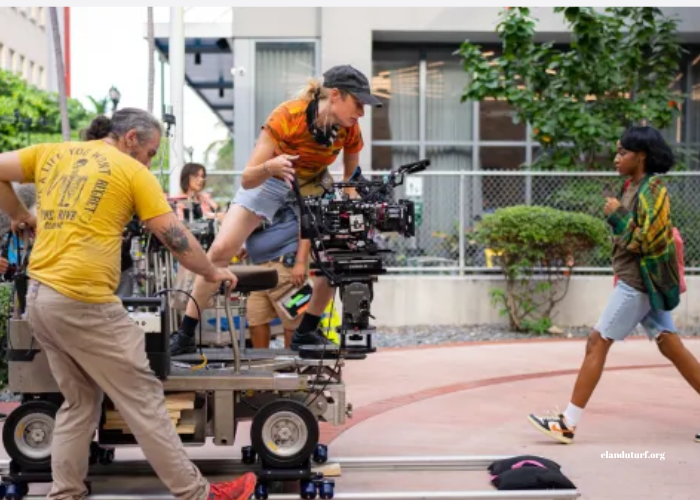Music is a living, breathing art form that continually evolves and reflects the cultural zeitgeist of its time. As we delve into 2024, the music landscape showcases an eclectic mix of genres, styles, and trends, driven by technological advancements, cultural shifts, and the ever-changing tastes of listeners. This article explores the prominent music trends in 2024, examining how various genres have evolved, how new styles have emerged, and what this means for the future of music.
The Rise of Hybrid Genres
One of the most significant trends in 2024 is the emergence and popularity of hybrid genres. Artists are increasingly blending elements from different musical styles to create unique sounds that resonate with diverse audiences. For instance, the fusion of hip-hop and country, which began gaining traction in the late 2010s, has exploded in popularity. Artists like Lil Nas X and Blanco Brown paved the way for this crossover, and in 2024, the trend has matured into a full-blown movement with numerous collaborations and genre-defying hits.
Another example of hybridization is the fusion of electronic dance music (EDM) and traditional folk music. In 2024, folk artists are experimenting with electronic elements, bringing their authentic sounds to the dance floor. This blend not only appeals to younger audiences but also allows traditional artists to reach new listeners who may not have engaged with their music trends otherwise.
Revival of Nostalgia: Retro Influences
In a world dominated by rapid technological advancements, nostalgia remains a powerful force in music. 2024 sees a resurgence of retro influences, with artists drawing inspiration from the sounds of the past. The 1980s and 1990s are particularly influential, as artists incorporate synth-driven melodies, catchy hooks, and lo-fi production techniques reminiscent of those eras.
The revival of 90s R&B is one of the most notable examples. Artists like SZA and Khalid have embraced the smooth, soulful sounds of the 90s, infusing them with contemporary themes and production techniques. This nostalgic approach not only appeals to older audiences but also introduces younger listeners to the rich musical heritage of previous decades.
Additionally, the influence of 80s pop is evident in the works of contemporary pop stars such as Dua Lipa and The Weeknd. Their music often features pulsating synths, retro beats, and catchy choruses that harken back to the golden age of pop music.
Globalization of Music: The World at Our Fingertips
The internet and digital streaming platforms have democratized music distribution, allowing artists from all corners of the globe to share their work with a worldwide audience. In 2024, the globalization of music has reached new heights, with genres like K-pop, Afrobeat, and Latin music gaining unprecedented popularity.
K-pop continues to dominate the charts, with groups like BTS and BLACKPINK leading the charge. Their meticulously crafted songs, intricate choreography, and dedicated fanbases have made K-pop a global phenomenon. In 2024, K-pop has expanded its influence, inspiring collaborations with Western artists and incorporating diverse musical elements.
Similarly, Afrobeat has surged in popularity, with artists like Burna Boy and Wizkid breaking through international barriers. The infectious rhythms and vibrant melodies of Afrobeat have captivated audiences worldwide, leading to collaborations with artists across various genres.
Latin music is another area experiencing tremendous growth. With the rise of artists like Bad Bunny and J Balvin, Latin trap and reggaeton have become mainstream genres in 2024. The fusion of Latin rhythms with pop and hip-hop elements has resulted in chart-topping hits and a more significant presence in global music culture.
Technology and Music Production: AI and Beyond
Technological advancements continue to reshape the music trends industry, and 2024 is no exception. One of the most significant trends is the rise of artificial intelligence (AI) in music production. AI tools are being used to compose, produce, and even perform music, revolutionizing the creative process.
Artists are leveraging AI to generate new sounds, explore innovative production techniques, and enhance their songwriting. AI algorithms can analyze vast amounts of data to identify trends and predict what elements resonate with audiences. As a result, artists can create music trends that is more tailored to listener preferences, leading to a more personalized experience.
Additionally, AI-generated music trendsis gaining traction in the mainstream. Several artists have experimented with AI collaborations, resulting in tracks that challenge traditional notions of authorship and creativity. This trend raises questions about the role of human musicianship in a world where machines can create music independently.
Furthermore, advancements in music production software and hardware have made it easier for aspiring artists to create high-quality recordings from their homes. The proliferation of affordable recording equipment and user-friendly software has democratized music trends production, allowing diverse voices to emerge.
Social Media as a Music Catalyst
In 2024, social media continues to be a driving force in shaping music trends. Platforms like TikTok, Instagram, and YouTube have become essential for artists to promote their work and connect with fans. Viral challenges and dance trends on TikTok often propel songs to the top of the charts, illustrating the power of social media in influencing musical tastes.
Artists are strategically using social media to build their brands, share behind-the-scenes content, and engage with fans directly. The intimate connection fostered through social media has transformed the artist-fan relationship, creating a more personal and authentic experience.
Additionally, the rise of livestreaming has provided artists with new avenues to connect with audiences. Virtual concerts and Q&A sessions allow fans to interact with their favorite artists in real time, breaking down barriers and creating a sense of community.
Diversity and Inclusivity in Music
The music trendsindustry in 2024 is more diverse and inclusive than ever before. The conversations surrounding representation and equity have gained momentum, leading to greater visibility for underrepresented artists and genres. Women, LGBTQ+ artists, and artists of color are making significant strides in various genres, challenging traditional norms and expectations.
In 2024, female artists are dominating the charts across genres, from pop to hip-hop to country. Empowering anthems that celebrate female strength and independence are resonating with audiences, driving a shift towards greater inclusivity in the music industry. Artists like Lizzo, Billie Eilish, and Megan Thee Stallion are not only achieving commercial success but also using their platforms to advocate for social change.
Furthermore, LGBTQ+ representation in music trendsis becoming increasingly prominent. Artists like Sam Smith and Lil Nas X are challenging stereotypes and advocating for acceptance and visibility through their music and public personas. Their success has paved the way for more LGBTQ+ artists to share their stories and perspectives.
The Evolution of Live Music Experiences
As the world continues to recover from the impacts of the COVID-19 pandemic, the live music landscape in 2024 has undergone a transformation. Concerts and festivals are back in full swing, but the way audiences experience live music has evolved.
In 2024, hybrid concerts—events that combine in-person attendance with virtual streaming—are becoming a norm. This format allows fans who cannot attend in person to participate in real time, expanding the reach of live performances. Artists are embracing technology to enhance the concert experience, incorporating immersive visuals, augmented reality (AR), and virtual reality (VR) elements into their shows.
Additionally, the demand for intimate live music experiences is on the rise. Smaller venues and house concerts are gaining popularity as fans seek more personal connections with artists. This trend reflects a desire for authenticity and a departure from the large-scale productions that dominated the pre-pandemic music scene.
Sustainability in Music
In 2024, the music trends industry is becoming increasingly aware of its environmental impact. Artists, festivals, and record labels are taking steps to promote sustainability and reduce their carbon footprint. Initiatives such as eco-friendly merchandise, waste reduction at festivals, and carbon offsetting are gaining traction.
Major music trendsfestivals are adopting sustainable practices, including compostable cups, recycling programs, and transportation initiatives to encourage attendees to use public transport. Artists are also using their platforms to raise awareness about environmental issues, advocating for change through their music and messaging.
Conclusion
As we navigate through 2024, the music landscape is characterized by an exciting blend of genres, styles, and cultural influences. The rise of hybrid genres, the revival of nostalgia, the globalization of music, and the integration of technology all contribute to a dynamic and ever-evolving musical tapestry.
The emphasis on diversity and inclusivity reflects a broader societal shift towards representation and equity, ensuring that voices from all backgrounds are heard and celebrated. The evolution of live music experiences and the focus on sustainability showcase the industry’s adaptability and commitment to positive change.
Ultimately, the trends in 2024 are not just reflections of the present; they are indicators of the future of music. As artists continue to push boundaries, explore new sounds, and engage with their audiences, the music trends industry will undoubtedly remain a vibrant and transformative force in our lives for years to come. The journey of music is far from over, and the excitement of what lies ahead is a testament to its enduring power.




